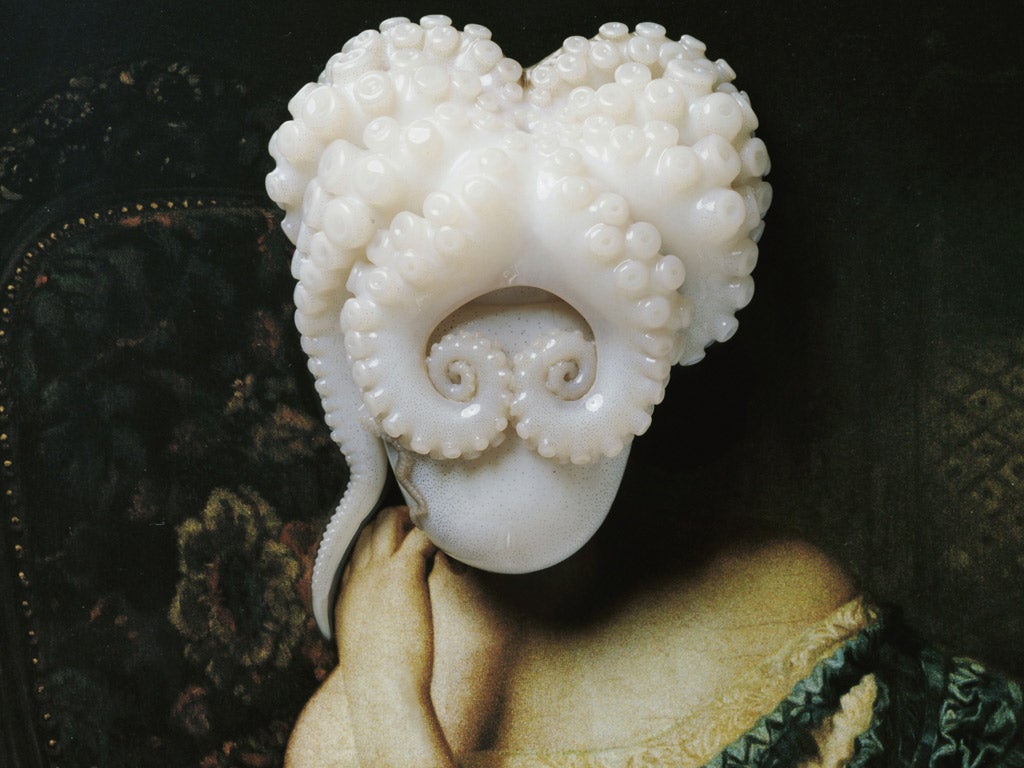Out of Focus: Photography, Saatchi Gallery, London
In the age of digital manipulation, the camera is having a identity crisis – and it's not a pretty sight

Your support helps us to tell the story
From reproductive rights to climate change to Big Tech, The Independent is on the ground when the story is developing. Whether it's investigating the financials of Elon Musk's pro-Trump PAC or producing our latest documentary, 'The A Word', which shines a light on the American women fighting for reproductive rights, we know how important it is to parse out the facts from the messaging.
At such a critical moment in US history, we need reporters on the ground. Your donation allows us to keep sending journalists to speak to both sides of the story.
The Independent is trusted by Americans across the entire political spectrum. And unlike many other quality news outlets, we choose not to lock Americans out of our reporting and analysis with paywalls. We believe quality journalism should be available to everyone, paid for by those who can afford it.
Your support makes all the difference.Out of focus. On the face of it, not a promising name for an exhibition of photographs.
But happily the show is at the Saatchi Gallery, which means that Out of Focus is contemporary, which means that the title is an in-joke.
Once upon a time, photography was an orderly discipline, mechanically driven and, on one level, mechanistic, reliant on the arcana of shutter speeds and focal lengths as painting was on a knowledge of varnishes and glazes. The invention of photography brought about a crisis in 19th-century painting that did away with those traditional limning skills. Now, in the 21st century, the camera is facing a crisis of its own.
Digital technology and Adobe Photoshop mean that anyone can do pretty much anything, photo-wise. And, having done it, the results can be uploaded on to the internet in seconds, offering instant fame of a kind Louis Daguerre could only have dreamed of. The old sub-divisions of photography – street, studio, fashion, reportage and, latterly, art – are things of an increasingly distant past, as are the assorted skills that went with them. Being in focus is the least of a contemporary photographer's worries.
And so, presumably, the title of the Saatchi show. Take 38 photographers from around the world these days and you will find no focus at all, in the sense of a consensus about what photography is or is there for. In times of revolution, everything's up for grabs. Does that surprise you? Of course not: history has always been that way. Take one photographer from this show – Katy Grannan, say, whose work is on the cover of its catalogue – and much the same applies.
Grannan's photographs are from a series called Boulevard, the roads of their title being in Los Angeles and San Francisco. Each shot is of a single subject: a woman with a black eye, a repellently hairy man, a fat woman baring one tattooed breast, a shirtless biker with a pair of baby rabbits, a man in a floral print frock. A tale of everyday folk, at least if, like Grannan, you grew up in the long shadow of Diane Arbus.
But what kind of photographs are these? I only ask because the images themselves press the point so urgently. They are, at their most literal, portraits, even if their collective subtitle is Anonymous. They are also, or at least pretend to be, street photographs, although their subjects have clearly been posed. These days, Grannan's images might even count as fashion: it is not hard to imagine the Boulevard pictures in Vogue. The last thing her portraits seem to be about is revelation or engagement. Their subjects exist only as a locus for Grannan to meditate on her own place in the world, to agonise over what kind of photographer she is, or what photography is.
I don't mean that insultingly. At best (or worst?), her images have a deadness that I would imagine is entirely intentional. The Boulevard pictures illustrate all too horribly Warhol's dictum about 15 minutes of fame, now made possible by digital technology. To quote Gilbert and Sullivan – a hateful thing I hope I shall never have to do again – "If everyone's somebody /Then no one's anybody". And at the heart of this existential worry about how and what we see in photographs is photography itself, once so rational, so disinterested, so skilled.
And that, I guess, is the story of this show, if there is one. David Benjamin Sherry might be a landscape photographer à la Ansel Adams, except of course, he isn't. Like Grannan, he did a Master of Fine Arts at Yale; like Grannan, he is an art photographer, the subject of his Hyperborealis is art photography. Mariah Robertson, also American, makes 100ft-long shots which start on the ceiling, slip down the wall and crumple along the floor: photography as sculpture. And so on. There are individual images in Out of Focus that catch the eye as images rather than as manifestos of cultural anxiety – I particularly liked Yumiko Utsu's Octopus Portrait – but on the whole this show is rather depressing.
To 22 Jul
Critic's choice
See the Gillian Wearing retrospective at London's Whitechapel Gallery: her portraits and film works are subtly revealing (to 17 Jun). Glasgow celebrates its wealth of artists by showing their work next to the best of the rest of the international scene. Don't miss Wolfgang Tillmans or Karla Black at the Glasgow International Festival of Visual Art (to 7 May).
Join our commenting forum
Join thought-provoking conversations, follow other Independent readers and see their replies
Comments